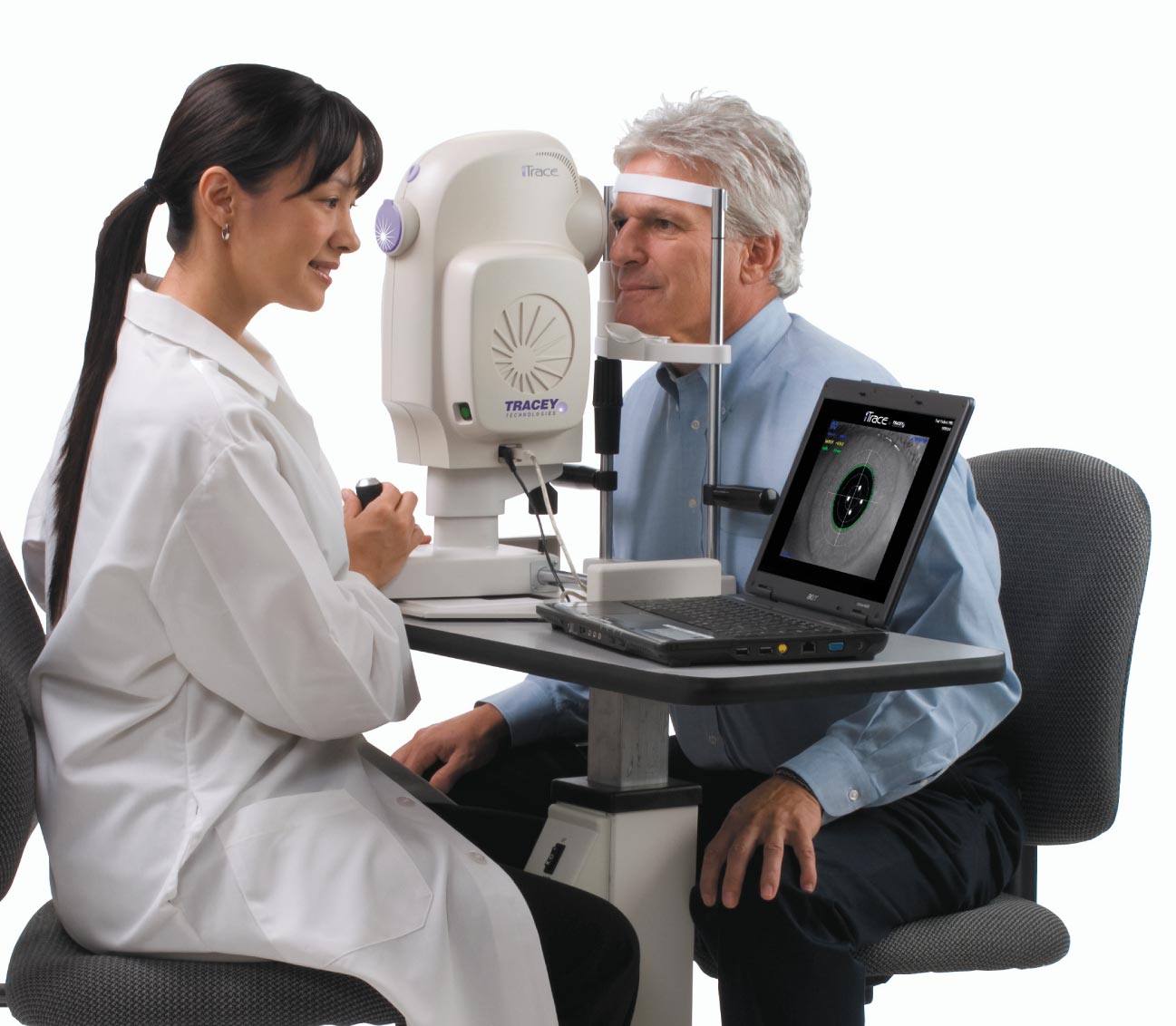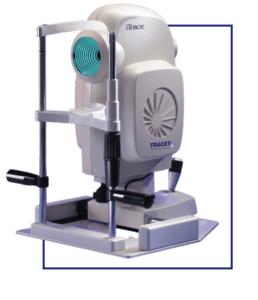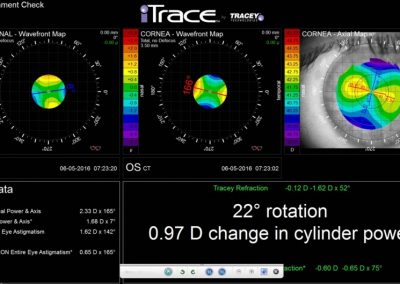

The Tracey iTrace wavefront aberrometer is thus very effective in measuring the quality of visual and vision functions with the help of optical ray tracing. The resulting data will then be applied in the computation of the refractive index map of the eye. With the machine, close to one hundred such measurements will be done in just a fraction of a second. It is the position of this deviation off the surface of the retina that is measured by the Tracy iTrace to an accuracy of 2 microns. Highly accurate refractive and wavefront analysisĭuring a typical examination, the infrared laser beam is directed to the eye where a deviation of the reflection from the surface of the retina will occur.
 Has both monocular and binocular open field fixation which is used to eliminate any form of patient accommodation. Has a Retinal Spot Diagram which gives graphical images of Point Spread Functions, aberrations, and total refractions. It comes with a selectable multi-zone refractions. Auto-identification of potential patient visual problems. Other than this, the other notable features include-: The Tracey iTrace features a very compact design with minimal space requirements.
Has both monocular and binocular open field fixation which is used to eliminate any form of patient accommodation. Has a Retinal Spot Diagram which gives graphical images of Point Spread Functions, aberrations, and total refractions. It comes with a selectable multi-zone refractions. Auto-identification of potential patient visual problems. Other than this, the other notable features include-: The Tracey iTrace features a very compact design with minimal space requirements. ITRACE TECHNOLOGY PORTABLE
Most practitioners will appreciate it if they could have portable that will not consume much space in the facility and could be easily moved from one location to another. With most optical diagnostics equipment, space consideration is normally a huge concern. Very compact design with lots of features
A Retinal Spot Diagram (RSD) provides a graphical image of patients total refraction, aberrations and Point Spread Function (PSF). Auto-identify potential patient visual complaints. Over spectacle refraction and wavefront measurement. Binocular and Monocular open field fixation eliminates patient accommodation. Ray Tracing technology for highly accurate wavefront and refractive analysis. The equipment uses a low power infrared laser beam. The operation of the iTrace may sound technical, but it operates on a very simple premise. The device uses a single beam refractometer based on the retina for tracing and measuring the distribution of the eye refraction. The Tracey iTrace is a wavefront aberrometer designed by Tracey Technology. The use of this aberrometer is one of the laser-based vision correction approaches where very accurate local parameter information of the eye is necessary for attaining very high visual acuity during the correction. I would not recommend it (not even sure it still runs on recent Mathematica).Tracey iTrace Wavefront Aberrometer is one such technology that uses a laser to finely reshape the cornea with the use of a variety of points depending on the exact desired results. 
Note that I used to rely on an ancient package called Tracer. I toyed a bit with it a few years ago and I found it pretty comprehensive if a bit short on the documentation but there is a significant community to ask questions to. Nowadays everybody seems to use the Mathematic package FeynCalc. I think it would be clever to use one of the leftover $\xi$ for $a_1$, after a circular permutation of the trace.Īs I mentioned above, I recommend using a program.

Consider $d$-dimensional gamma matrix structures.








 0 kommentar(er)
0 kommentar(er)
